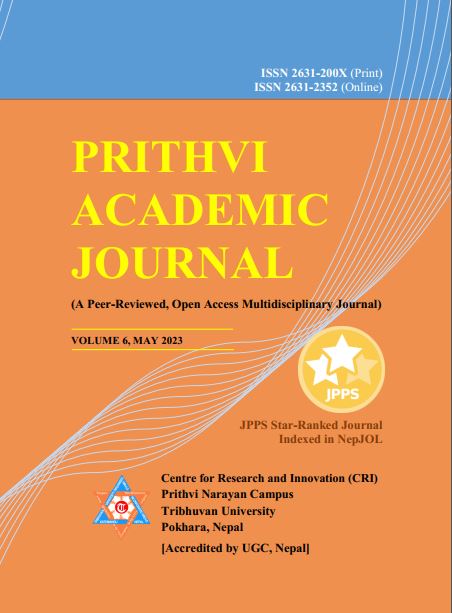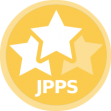eJournals Published by Centre for Research and Innovation: eJournals Published by Departments:
Author Guidelines
Authors submitting articles for publication must follow the guidelines below:
- Manuscripts must be prepared in a single Microsoft Word file including charts, figures, tables, graphics, or any other materials relevant to the topics.
- A manuscript must have a minimum of 3,000 words, but should not exceed 7000 words or not more than 10 pages of single line space A4 size paper and Times New Roman 11-point font size throughout. The paragraphs must only be left justified throughout with a paragraph space.
- Manuscripts submitted to the Centre for Research and Innovation must be the original work of the author/s, must not be submitted anywhere for publication, and not published partially or in full in any other journals.
- Author/s must maintain consistency in style throughout the manuscript. All manuscripts must contain at least 10 different citations and must follow layout formats of APA style latest version.
- Three types of manuscripts may be submitted: original research article, theoretical/critical essay article and review article. All manuscripts must include the following components in order to achieve consistency in style that make the writing easier for readers:
- Title
- Author/s’ biography in brief (name, designation, affiliation, address, email ID)
- Abstract (within 150 to 250 words)
- Keywords (not more than 5 words or phrases)
- Main Headings (include introduction, body with several headings or sub-headings, and conclusion; include recommendations if any)
- Acknowledgements (if any)
- References
- Appendices (if any)
- But before submitting the manuscripts, the author/s must make sure that 3 electronic version files are prepared for submissions: 1) a cover page that bears the title of the article, the author/s’ name and affiliation, and abstract with keywords, and email IDs or phone numbers of the author/s only; 2) a separate text only that should include the title of the article, abstract with keywords, main text and references without the name, affiliation and email IDs or phone numbers of the author/s; and 3) a latest abridged CV including all co-authors (if the manuscript is co-authored).
- All manuscripts will be desk screened, assessed by two blind reviewers, and finalized by editors to determine whether they meet the requirements of the journal.
- All submissions will basically be evaluated and selected as per the reports obtained from the blind reviewers. For any dispute regarding the selection of the manuscript for publication, the decision of the editorial board will be final.
- All authors should take all ethical responsibility for their submitted and published manuscripts. If submitted manuscripts have used false data or are found plagiarized from others’ work, they will be rejected without review and returned to the respective author/s.
- The author/s must agree on the terms and conditions of the copyright authorization of the articles to the journal after their manuscripts are accepted for publication.
- The journal does not charge its authors any fees for submitting and publishing their manuscripts as it is fully funded by the institution itself.
- Only an electronic version of submissions will be accepted for publication. The journal will not accept the hard copy submissions. However, the author/s wish to know more about online submissions, they can email us at paj@pncampus.edu.np.
- Detailed manuscript formatting guidelines are mentioned in the “Submission” page. So the author/s are suggested to prepare their manuscripts, adhering to the format specified by the journal.
THE MANUSCRIPT REVIEW PROCESS
In general, Prithvi Academic Journal follows a mixed review system that includes initial screening, double blind peer reviews and editorial reviews. The review process for each manuscript will take 10 weeks on average, starting from the submission of manuscripts to the editorial decision for publication. Except the editors, the peer reviewers will not be aware of the names and affiliations of the authors.
The aim of this review process is to determine the originality, validity and relevance of the manuscripts. Successful manuscripts will pass through five stages: initial screening, peer reviews, editorial assessment, authorial revision and editorial reviews.
Stage 1: Initial Screening After all submissions are screened by the editors for relevance, they will be checked for plagiarism. If they are successful in the initial screening and plagiarism check, they will be accepted for another step, that is, peer reviews.
Stage 2: Peer Reviews
All accepted manuscripts will be reviewed by two reviewers who will be asked to evaluate whether the manuscript is publishable or not. They will produce peer review reports and send them to the editorial board for consideration. The reviewers will not recognize the identification of the authors, including their names and affiliations.
Stage 3: Editorial Assessment
On the basis of the reviewers’ reports, the editors will determine whether the manuscripts should be sent to the authors for revision or not. The editors’ decision will be the final in this case.
Stage 4: Authorial Revision
The authors will be provided with the reviewers’ reports, including the editors’ instructions for revision of the manuscripts. The authors will not recognize the identification of the reviewers’ names and affiliations.
Stage 5: Editorial Reviews, Proofreading and Final Decision
All revised manuscripts will be reviewed by the editors to make sure that they are up to the standards of the journal for publication. Proofreading will be done by both desk editors and the concerned authors. The editors will then reach a decision based on the reports sent by the reviewers and the authors’ revised submissions. The editors may reject the revised manuscripts if the revised manuscripts are not properly revised and proofread. Finally, the editorial board will write a letter of acceptance to the successful authors for publication.
Publication Charge
The journal does not charge the authors for publishing the articles because the journal is fully funded by the institution.
Open Access Policy
The journal allows its readers to read, download and share the published articles in our ejournals site ( http://ejournals.pncampus.edu.np/ejournals/paj/). All published articles are immediately available after they go online. In addition, all published articles are under the terms of a Creative Commons License, which also permits the authors to use, distribute and reproduce in any form, provided that the original work is cited properly.
Copyright Policy
The journal is licensed under a Creative Commons Attribution 4.0 International License (CC BY 4.0). The concerned authors will retain the copyright of published articles. The publisher may reuse published articles with prior permission of the concerned author(s).
Privacy Statement
The authors’ information provided to the journal will be kept confidential and used only for the journal’s publishing purposes, which will not be made available to any third party.




